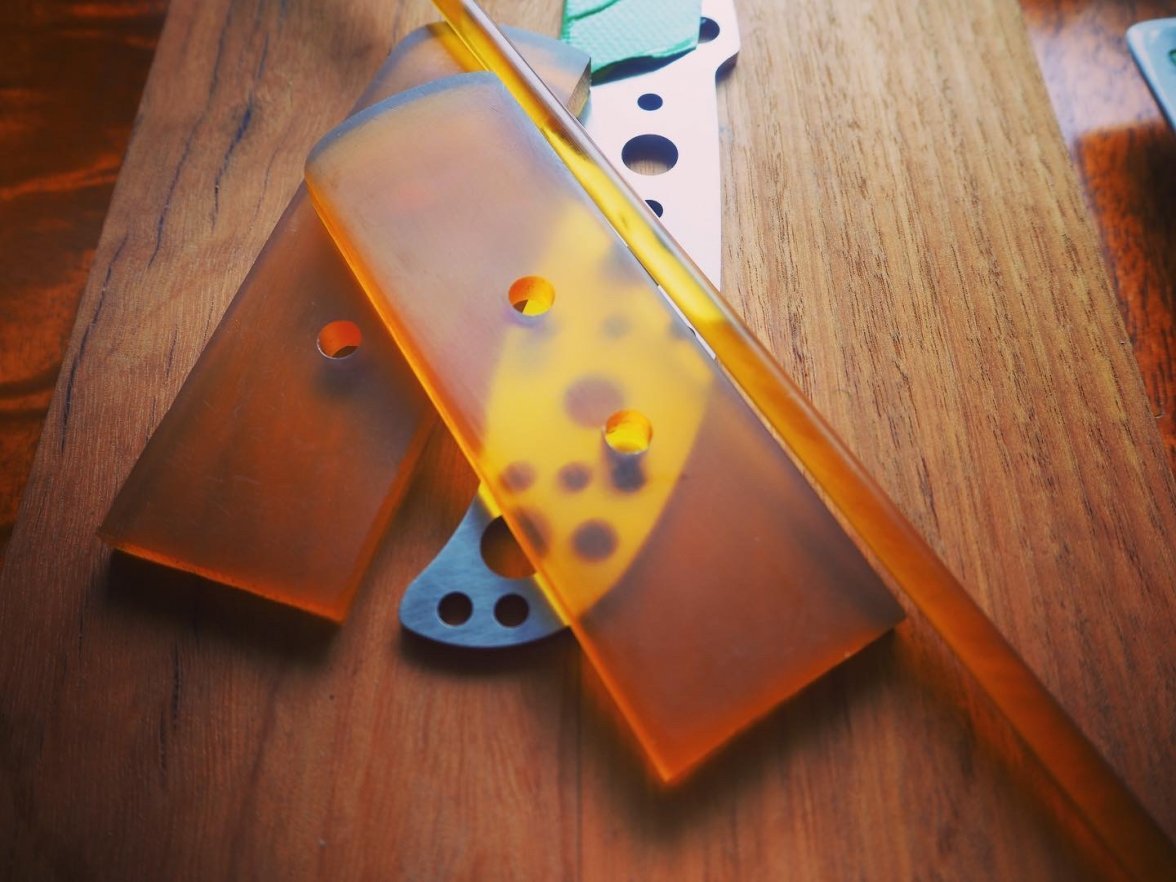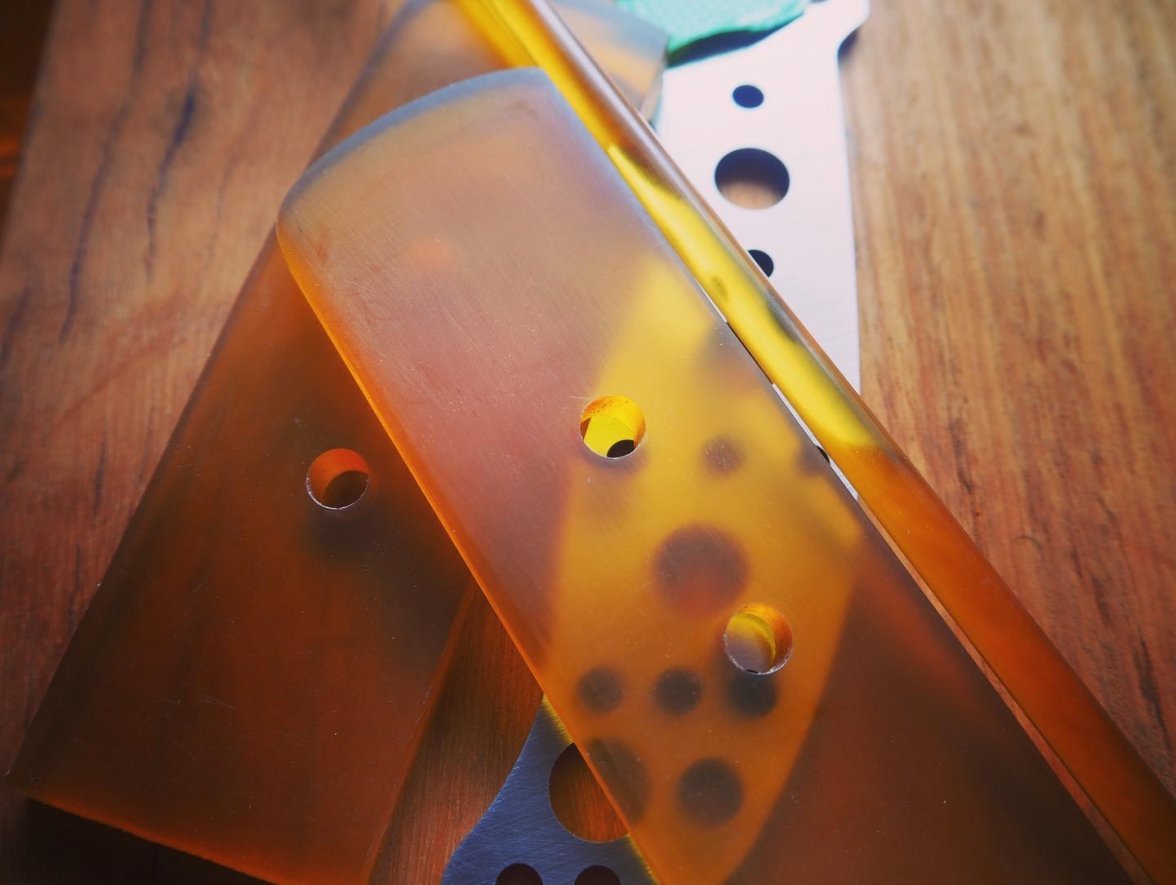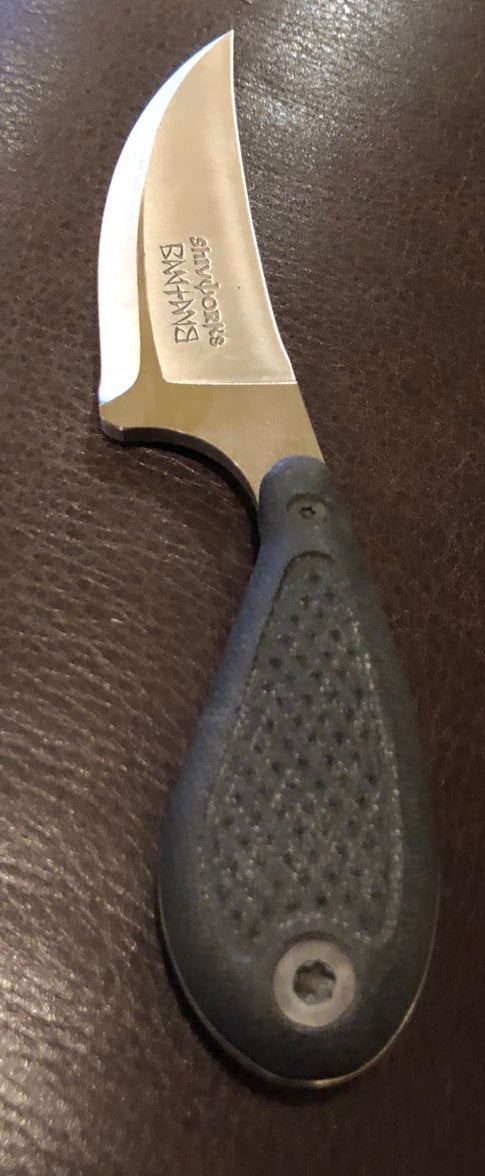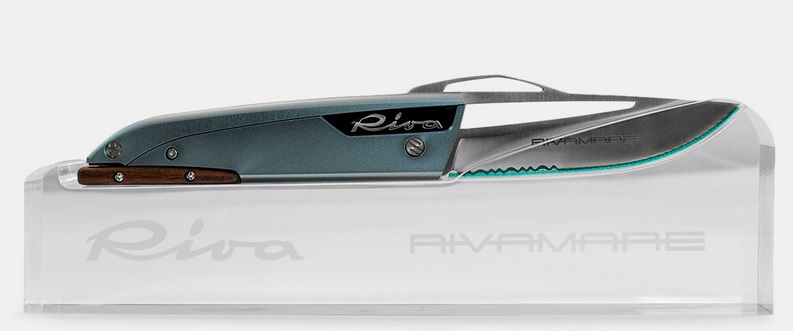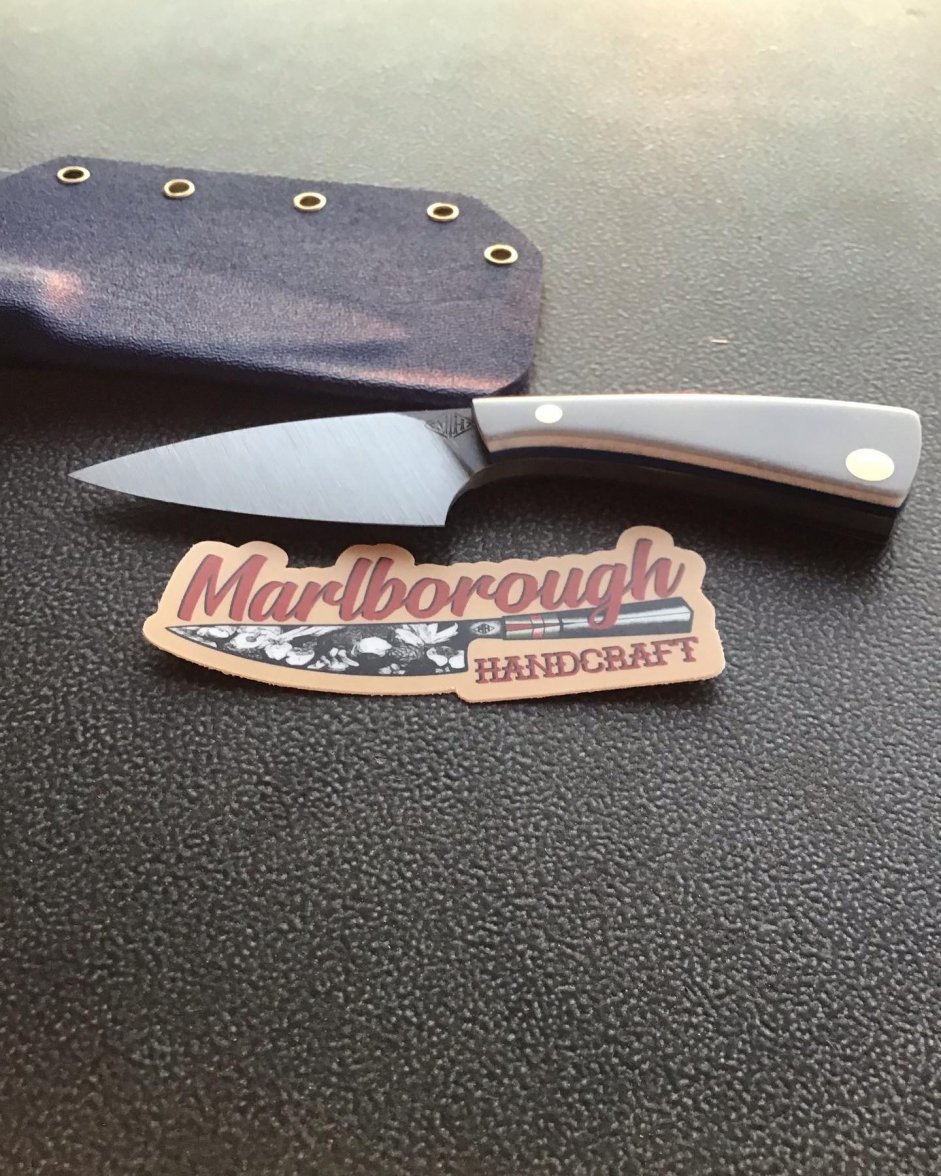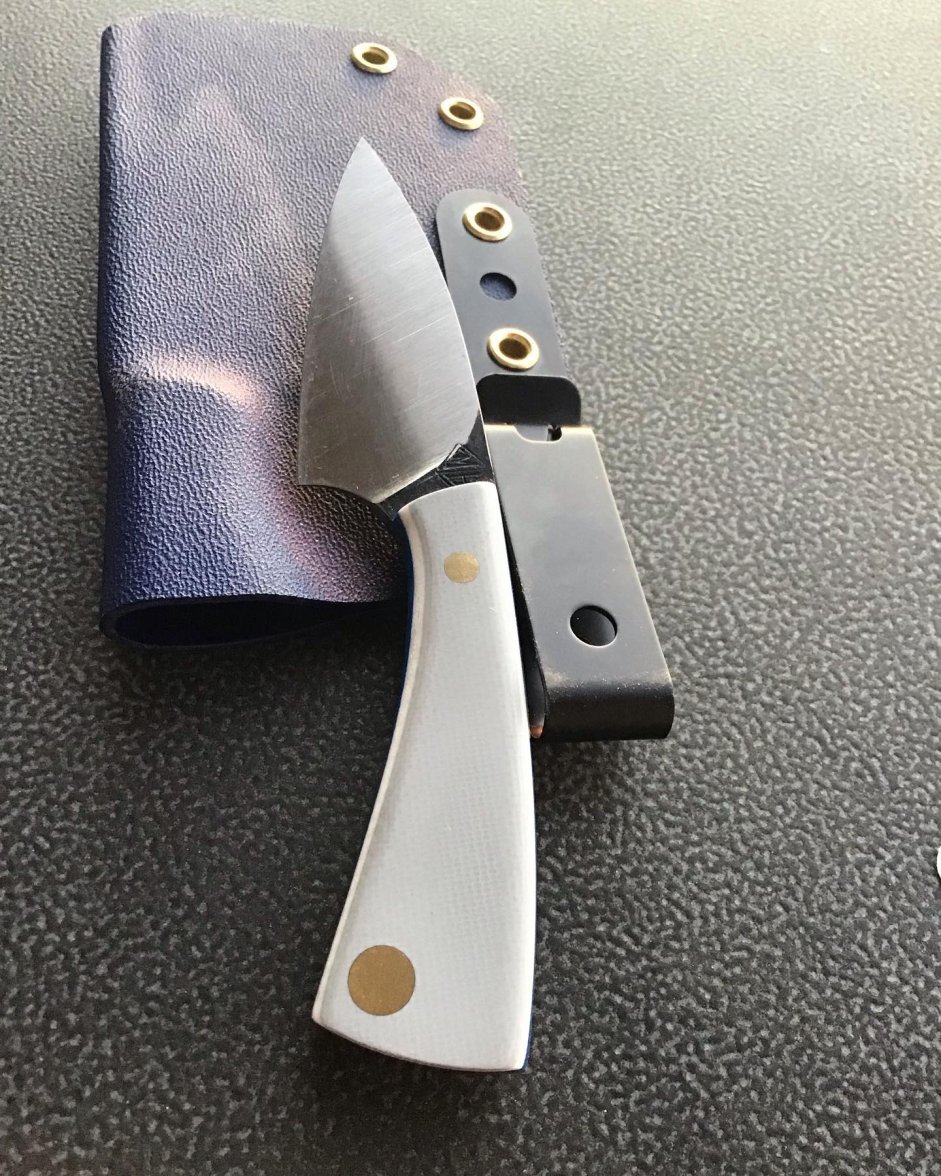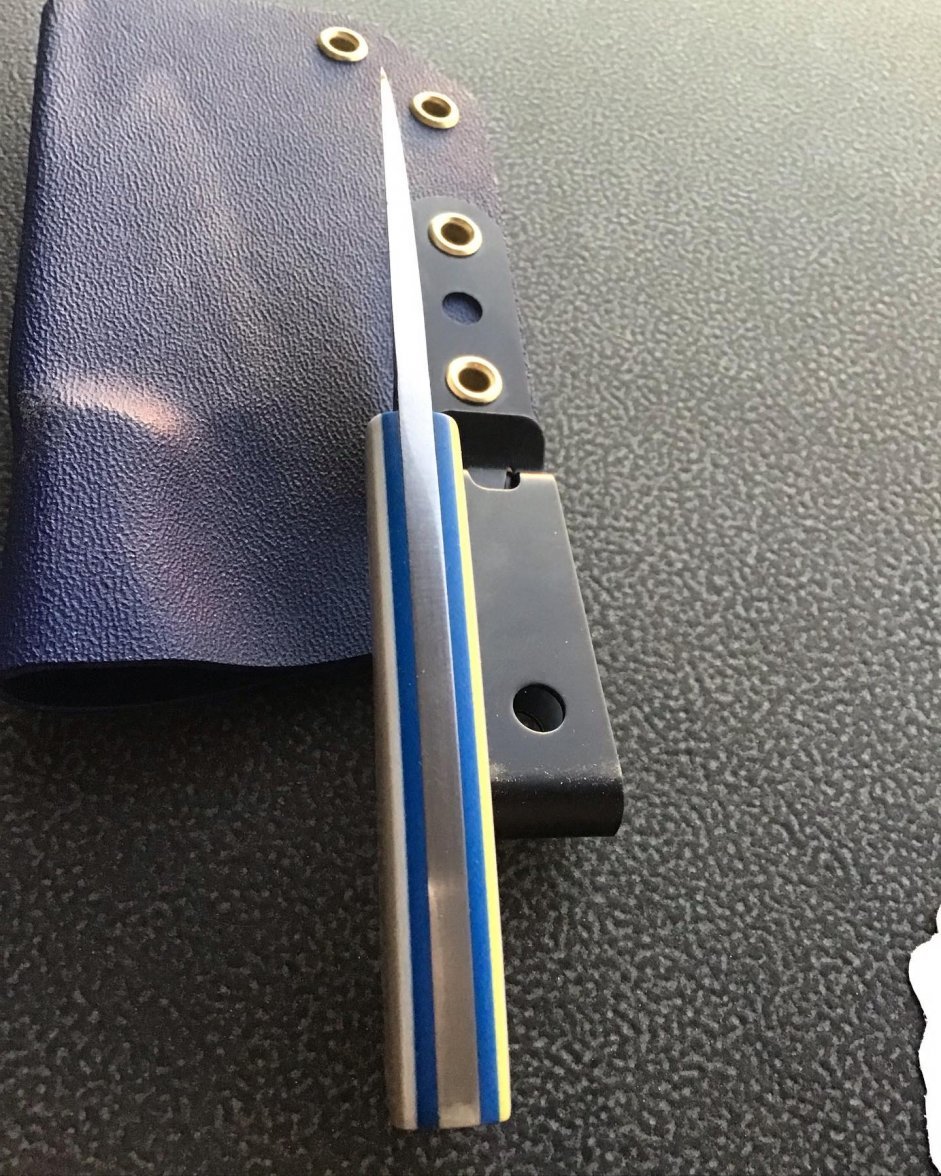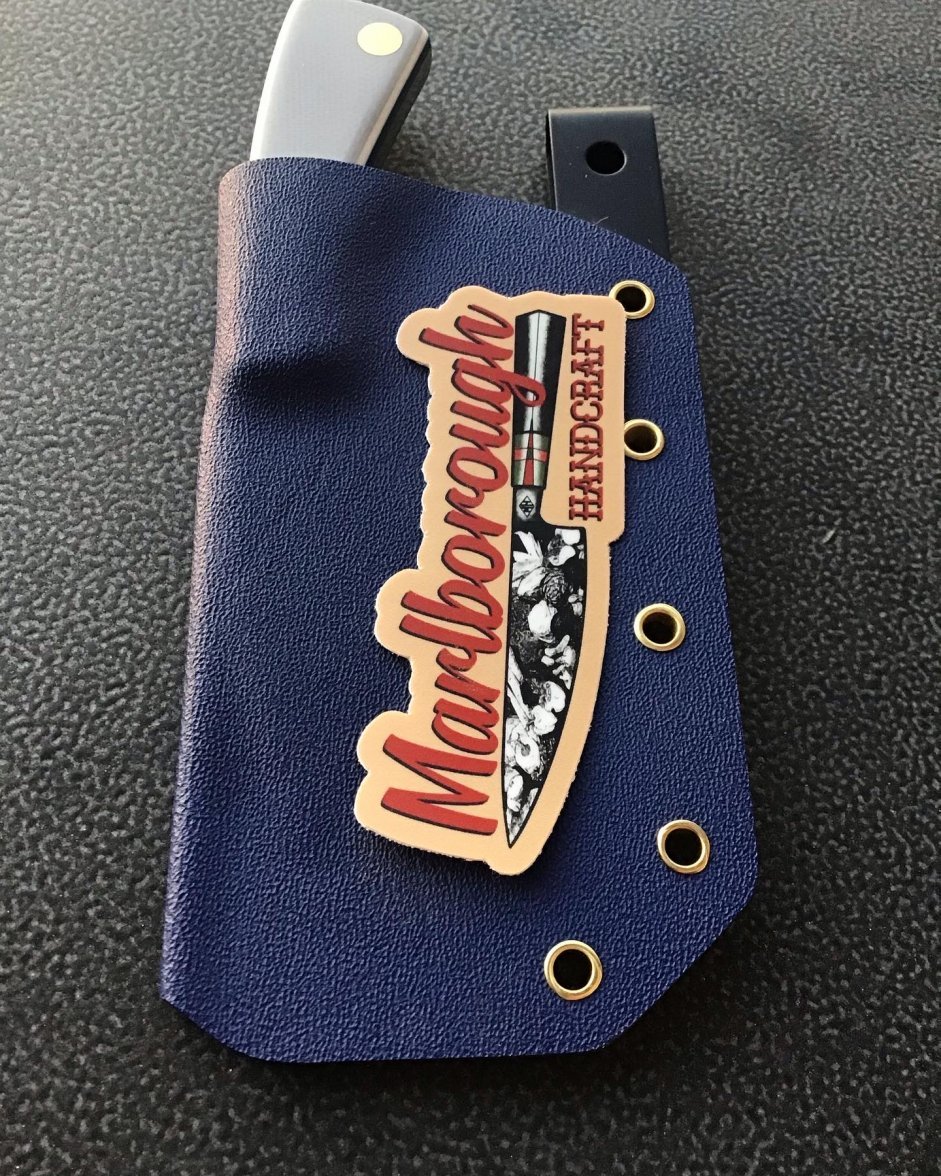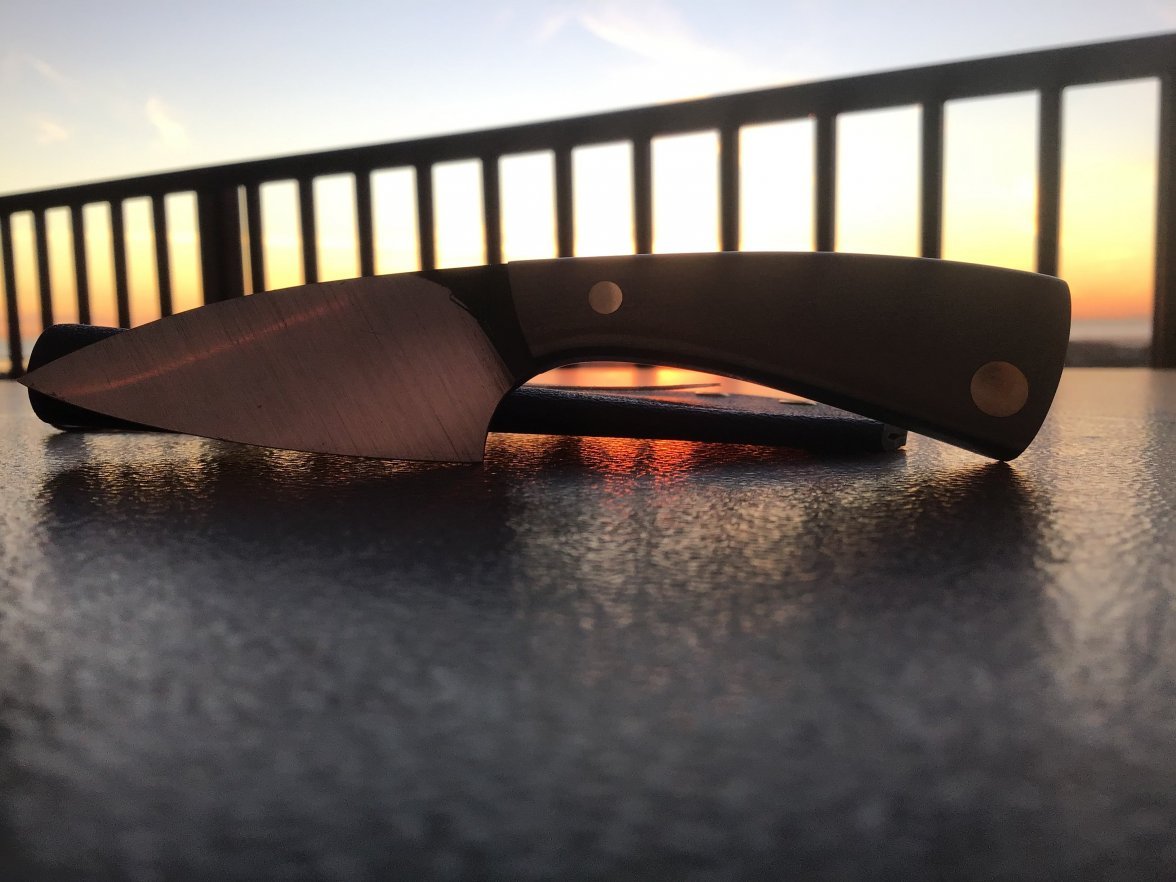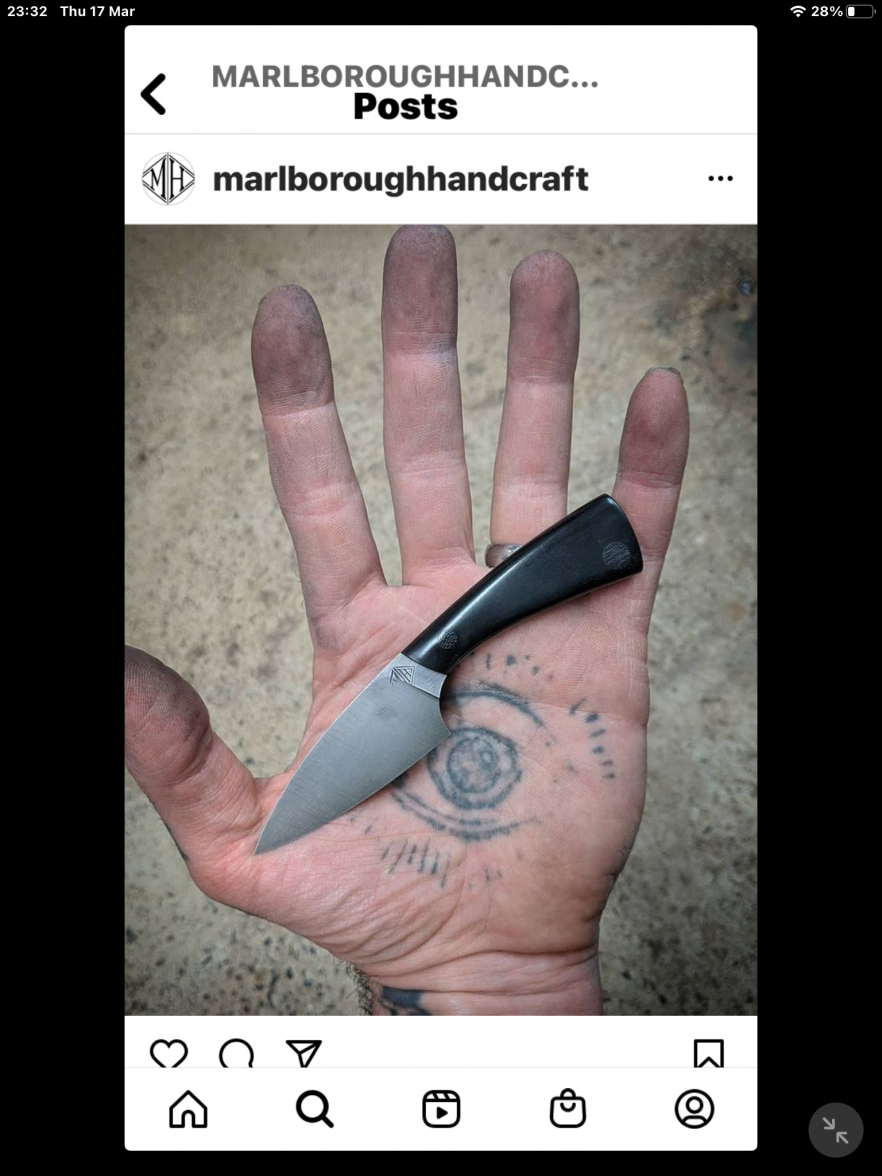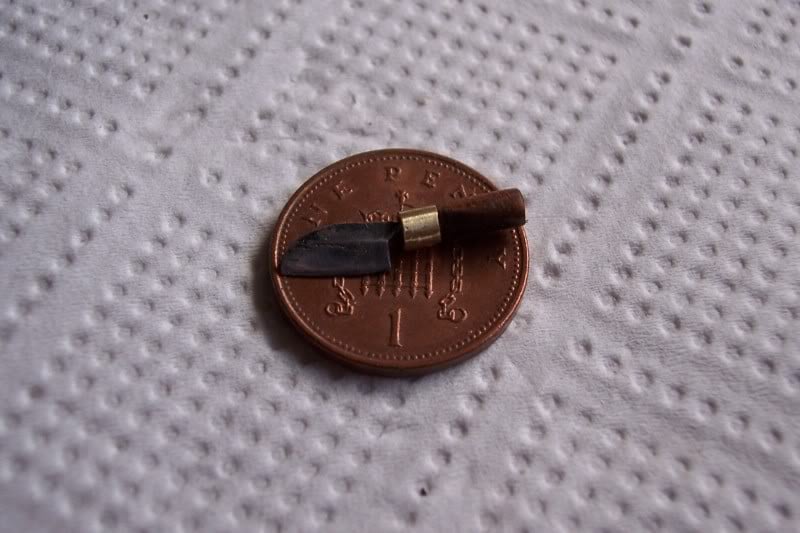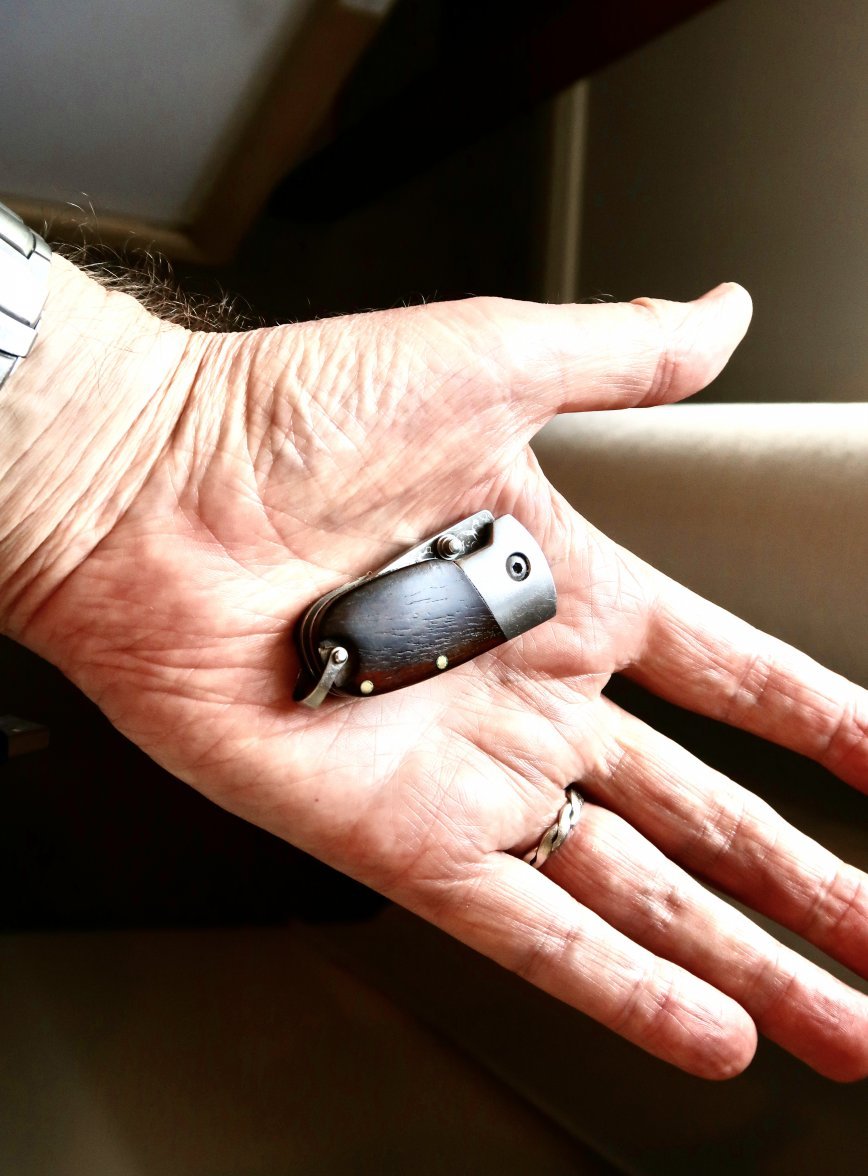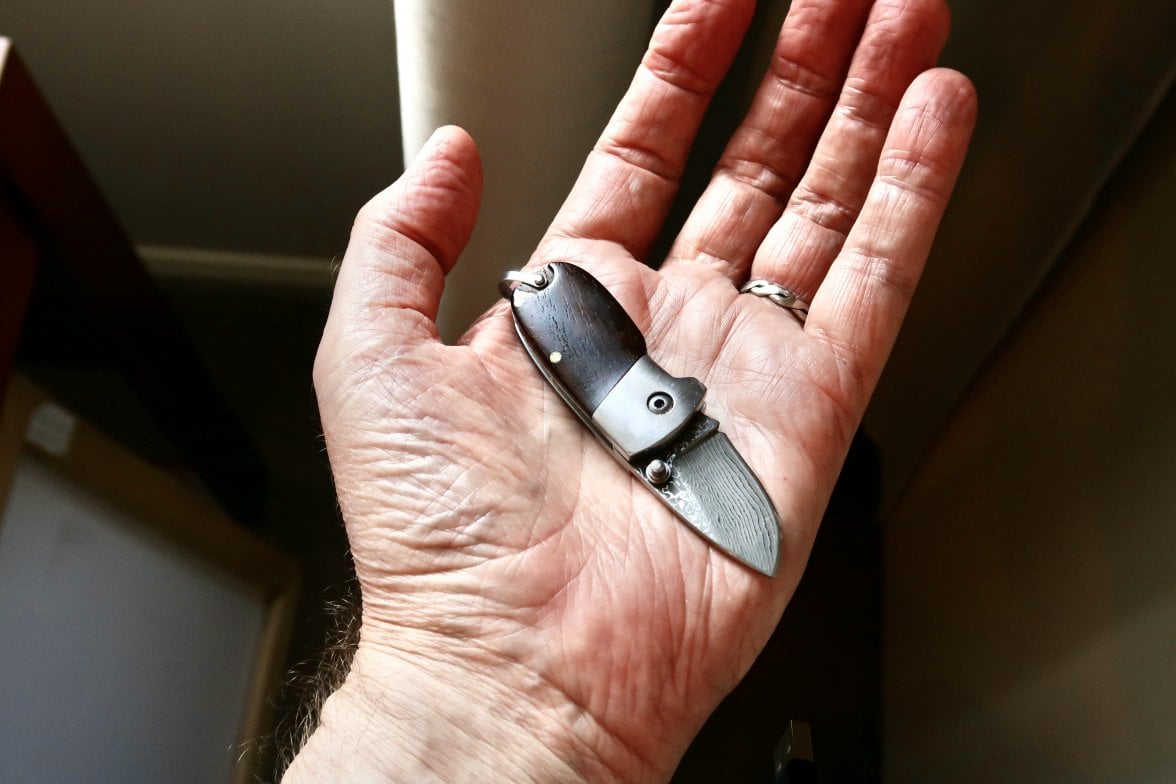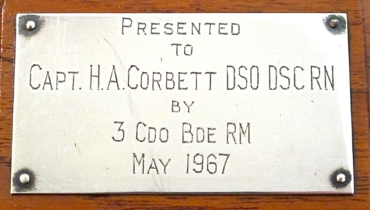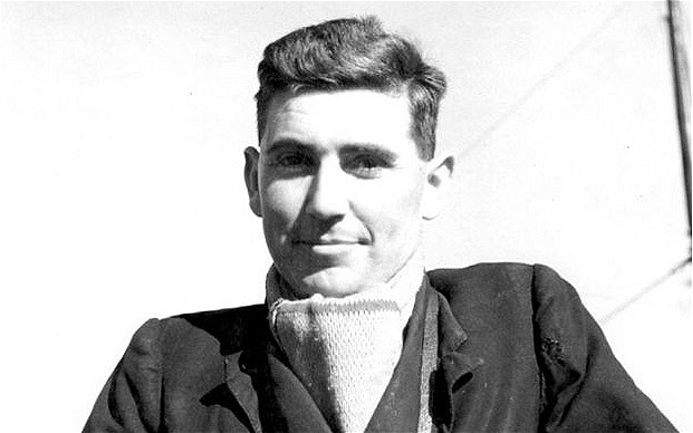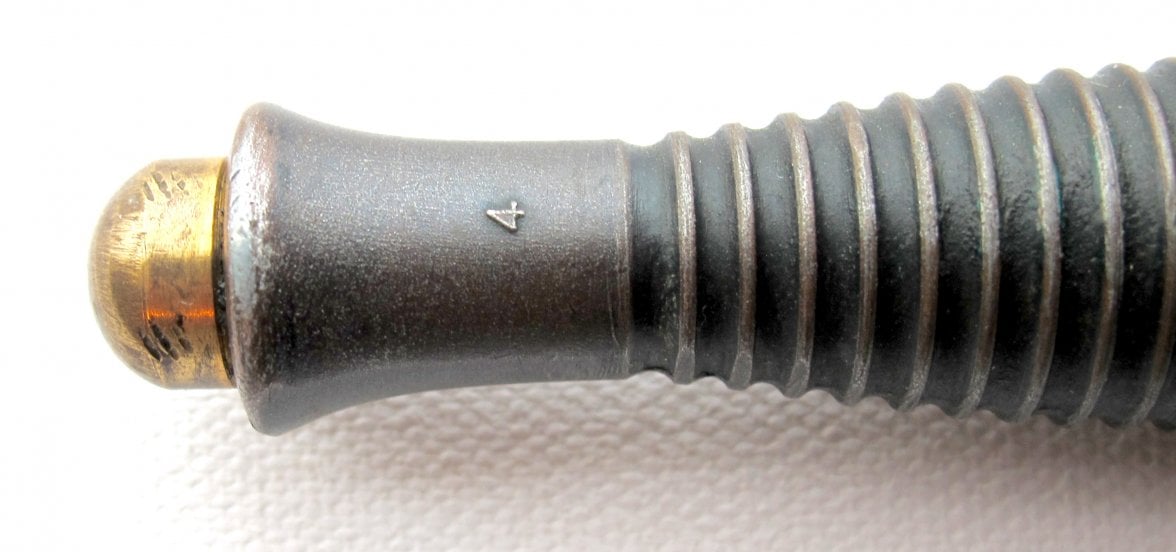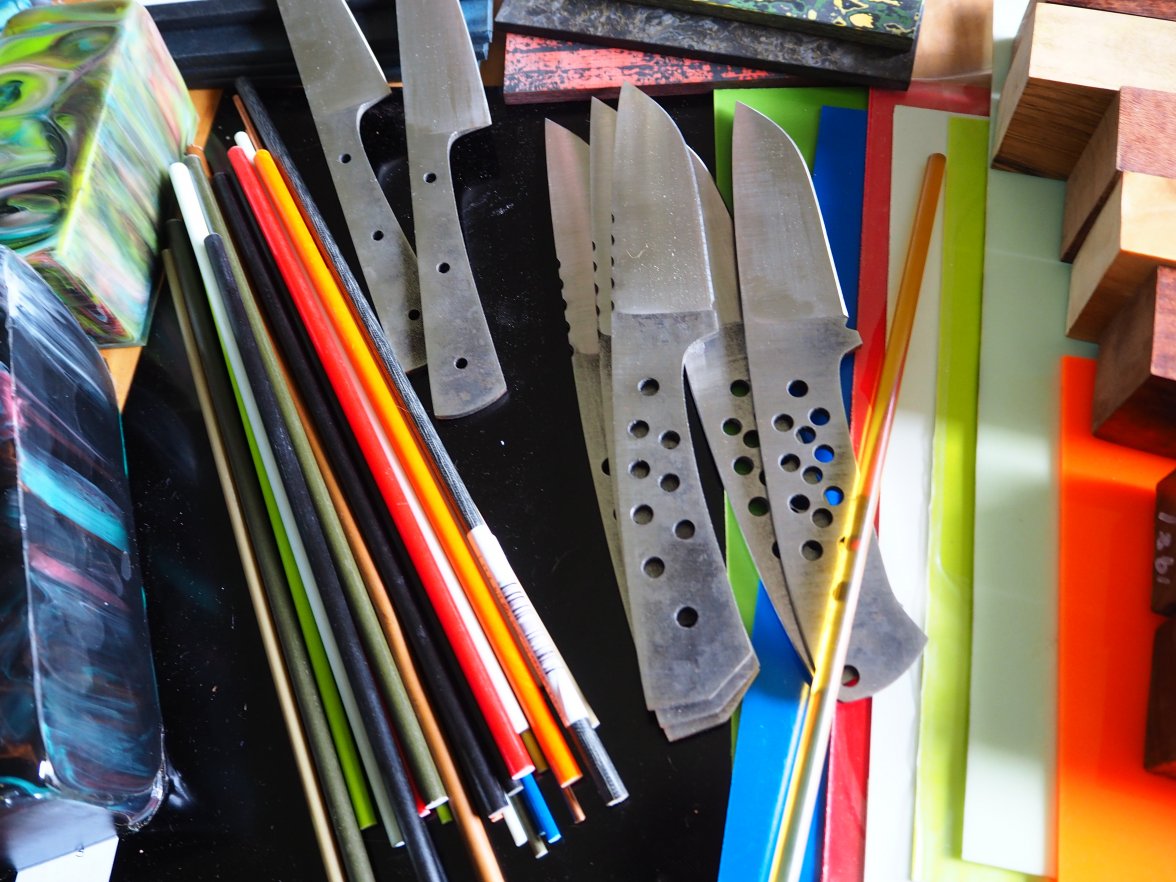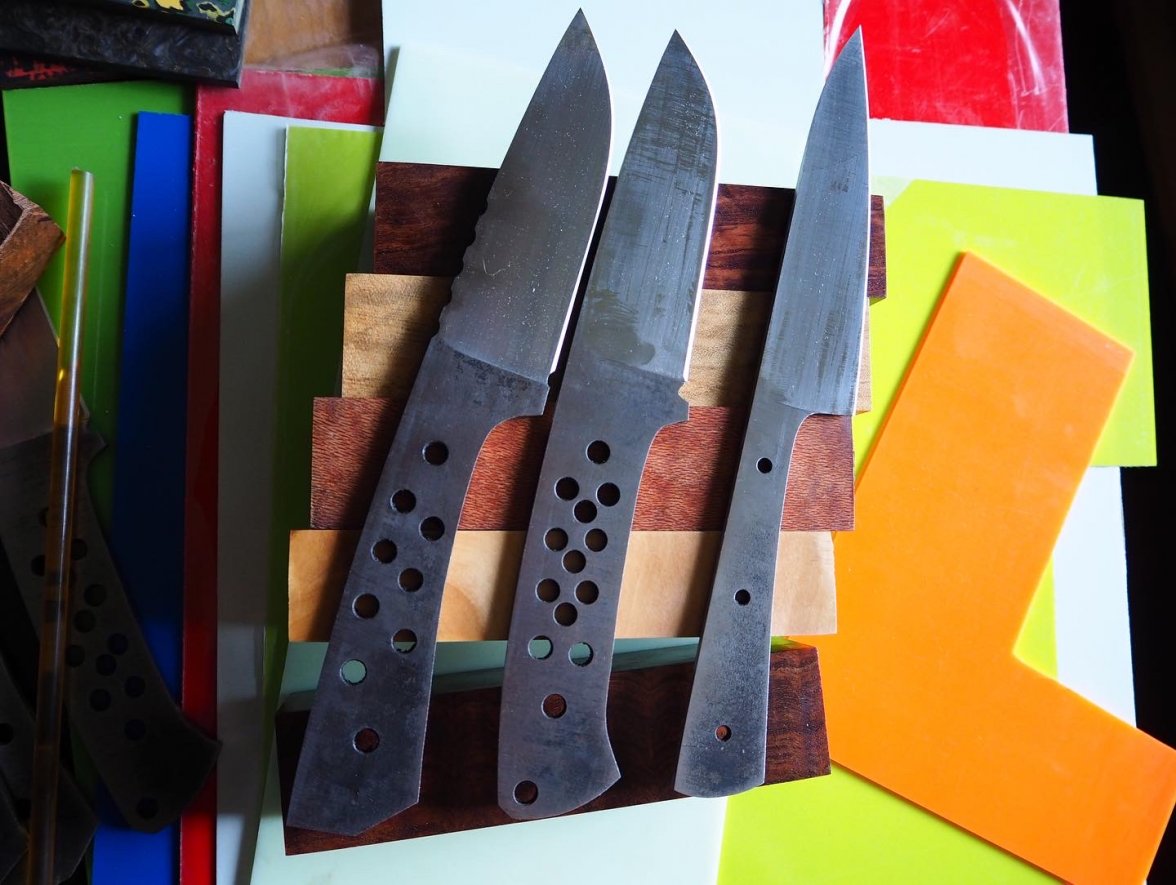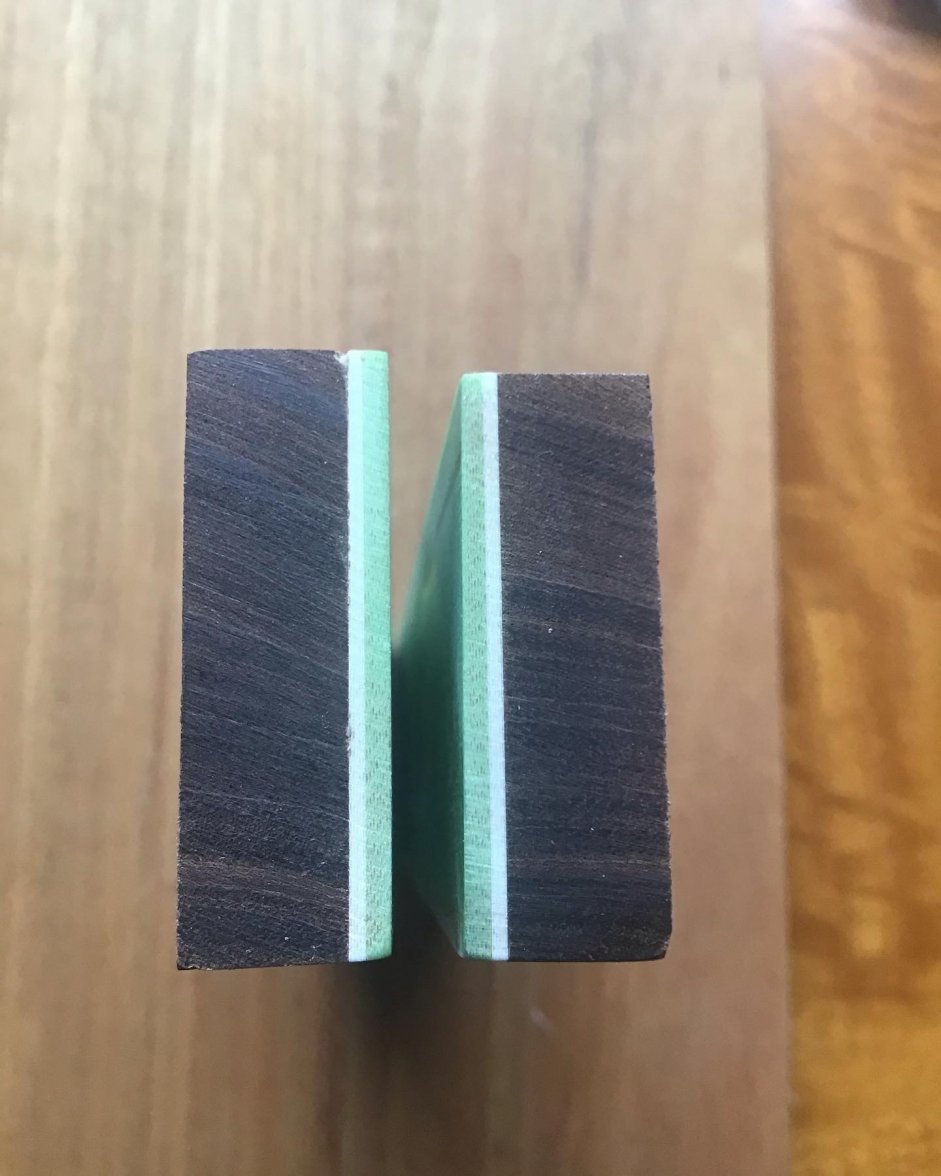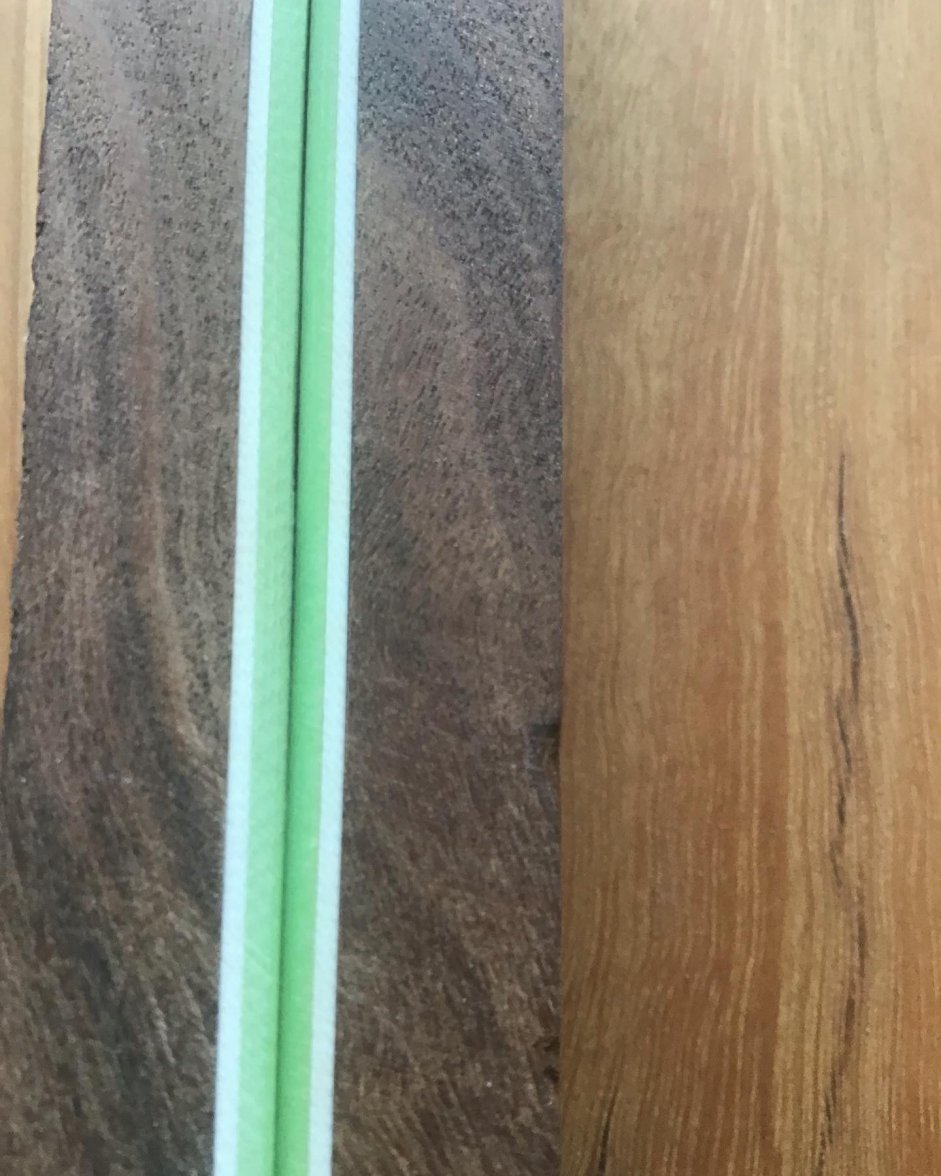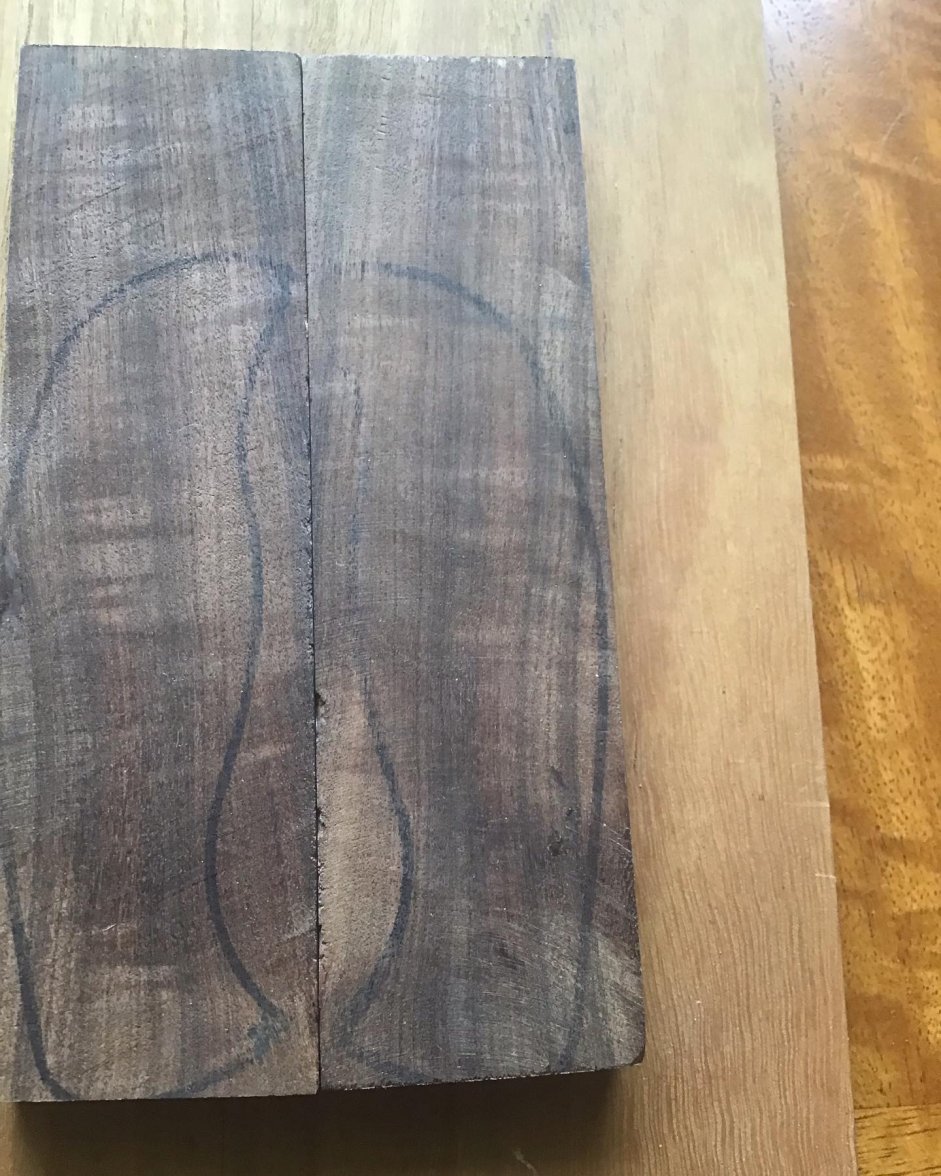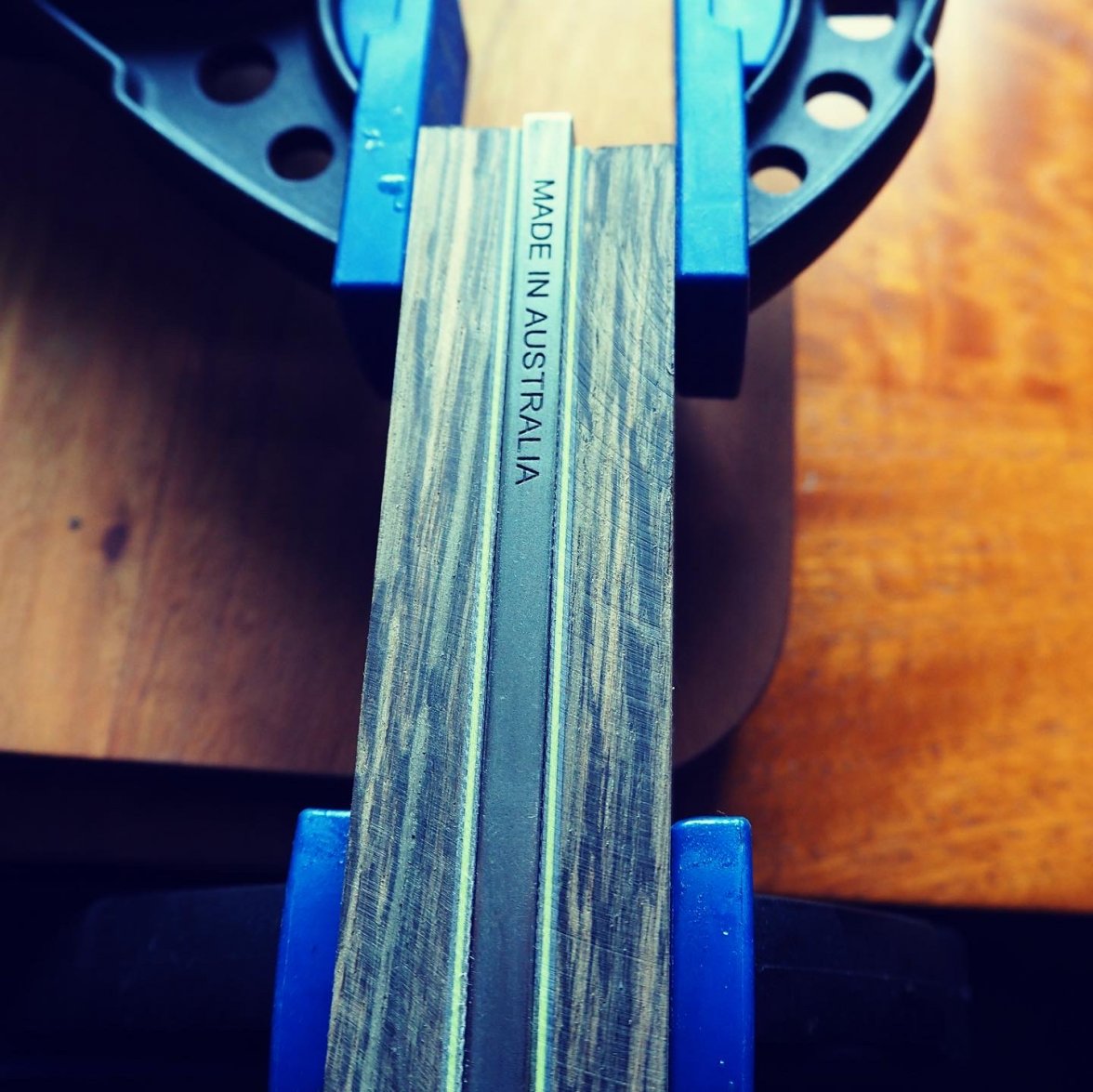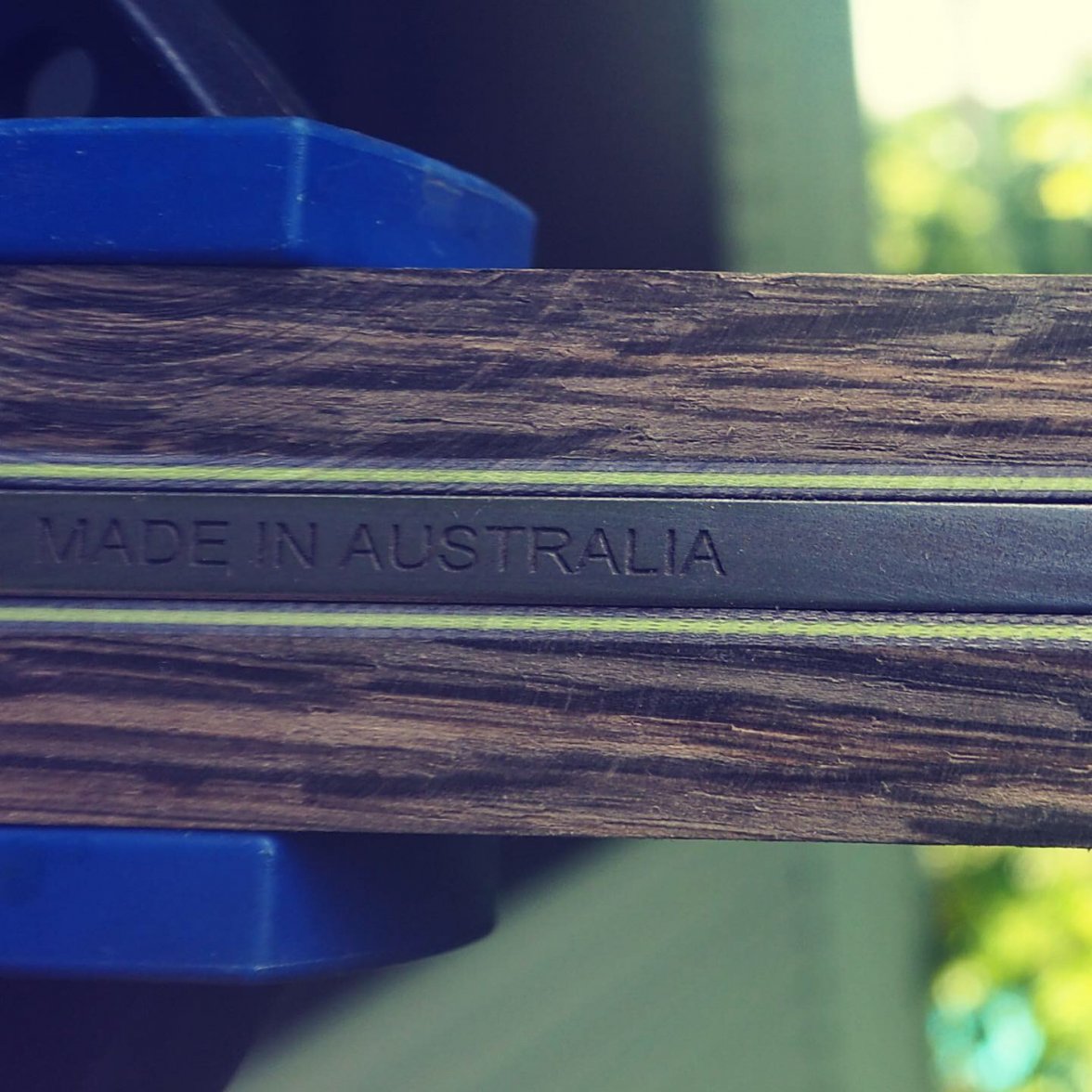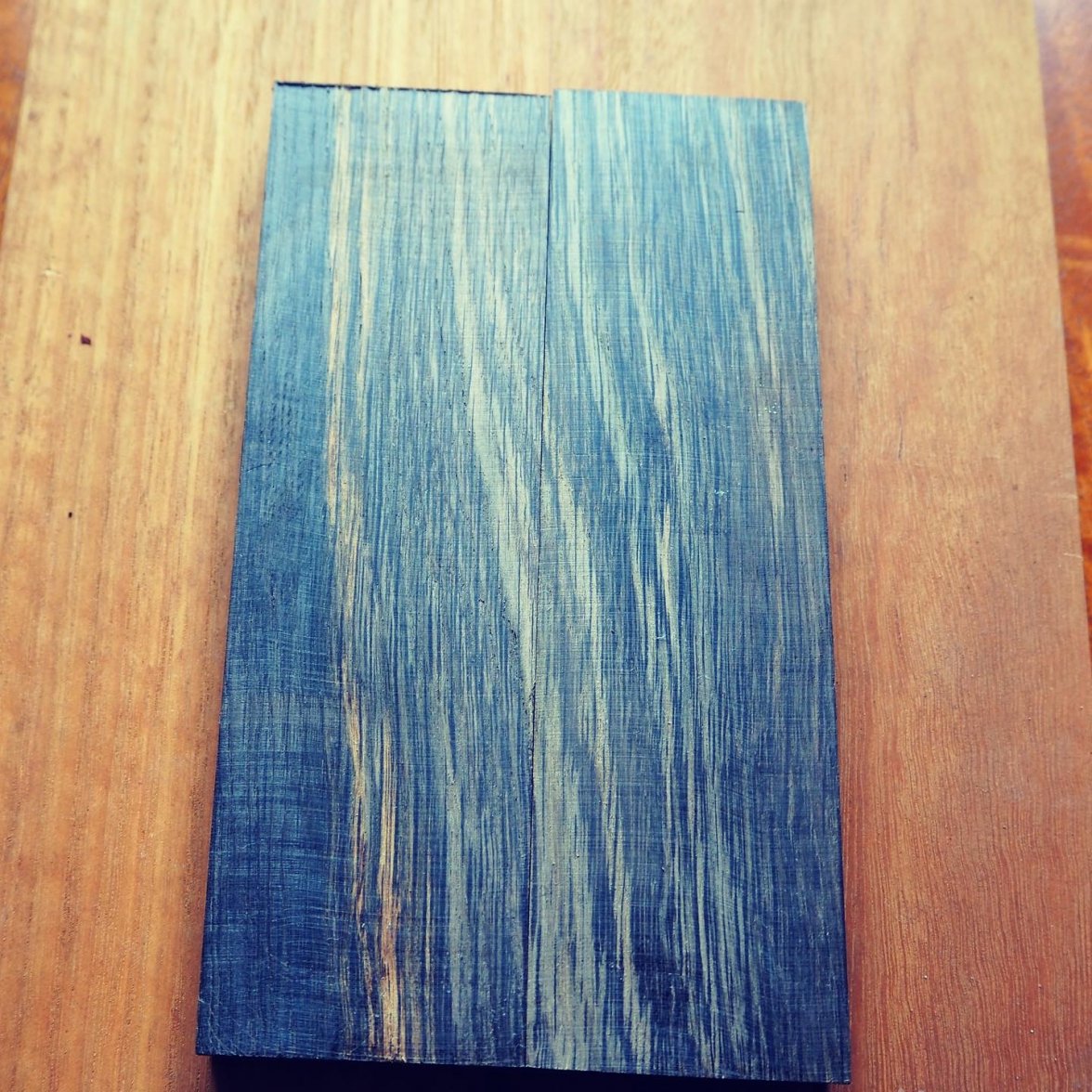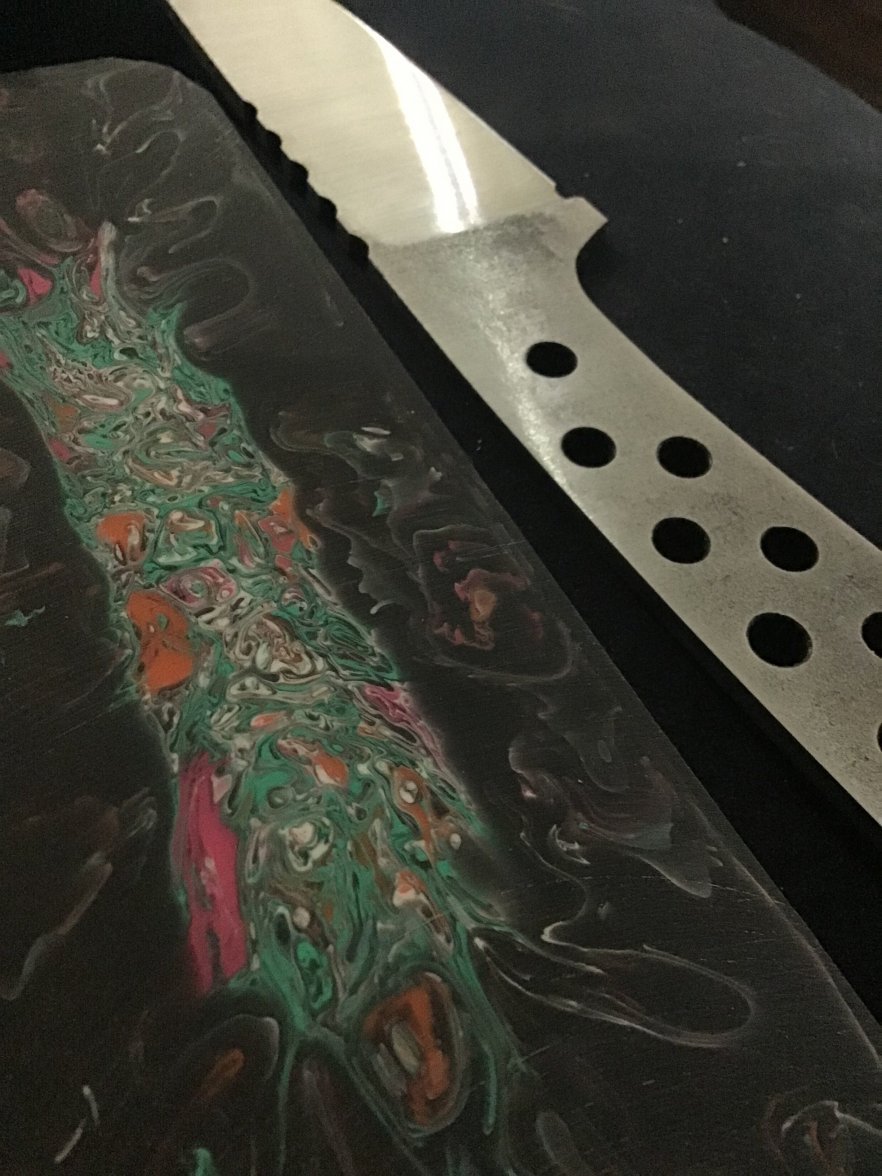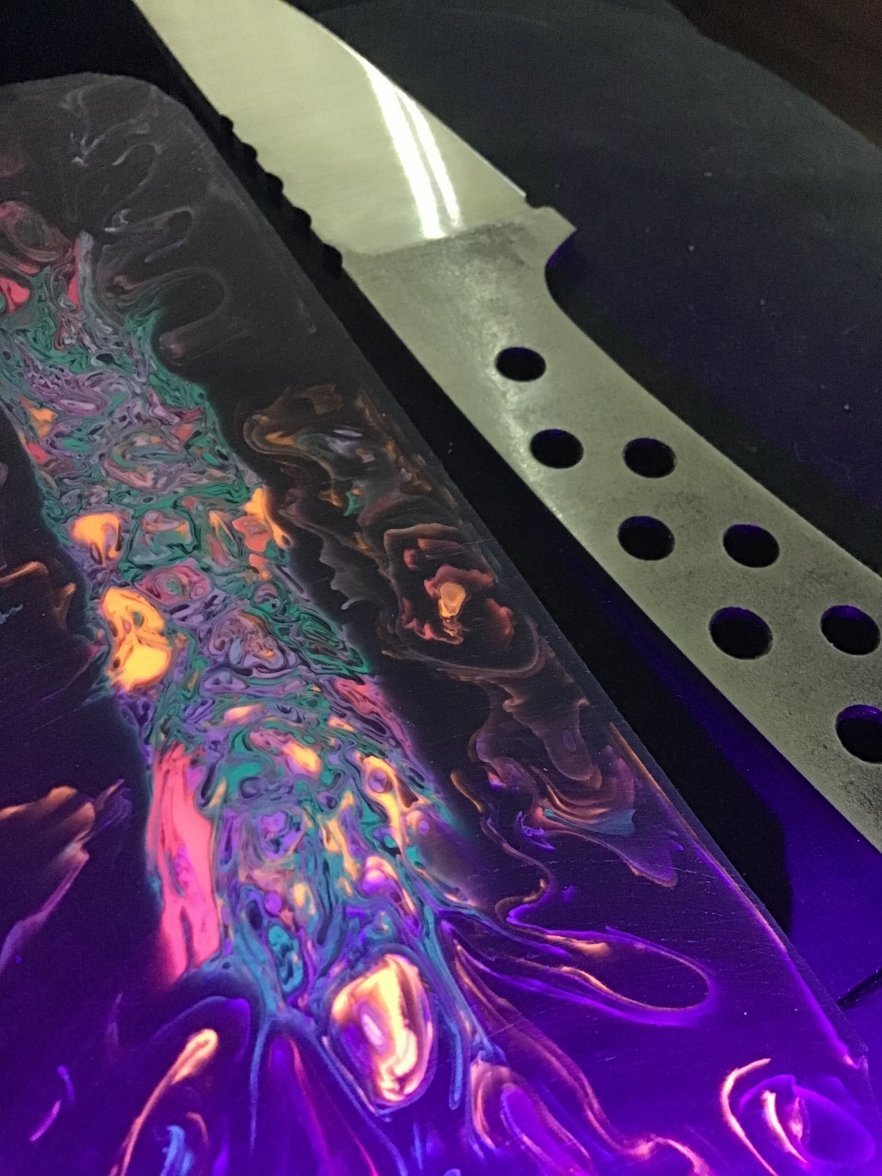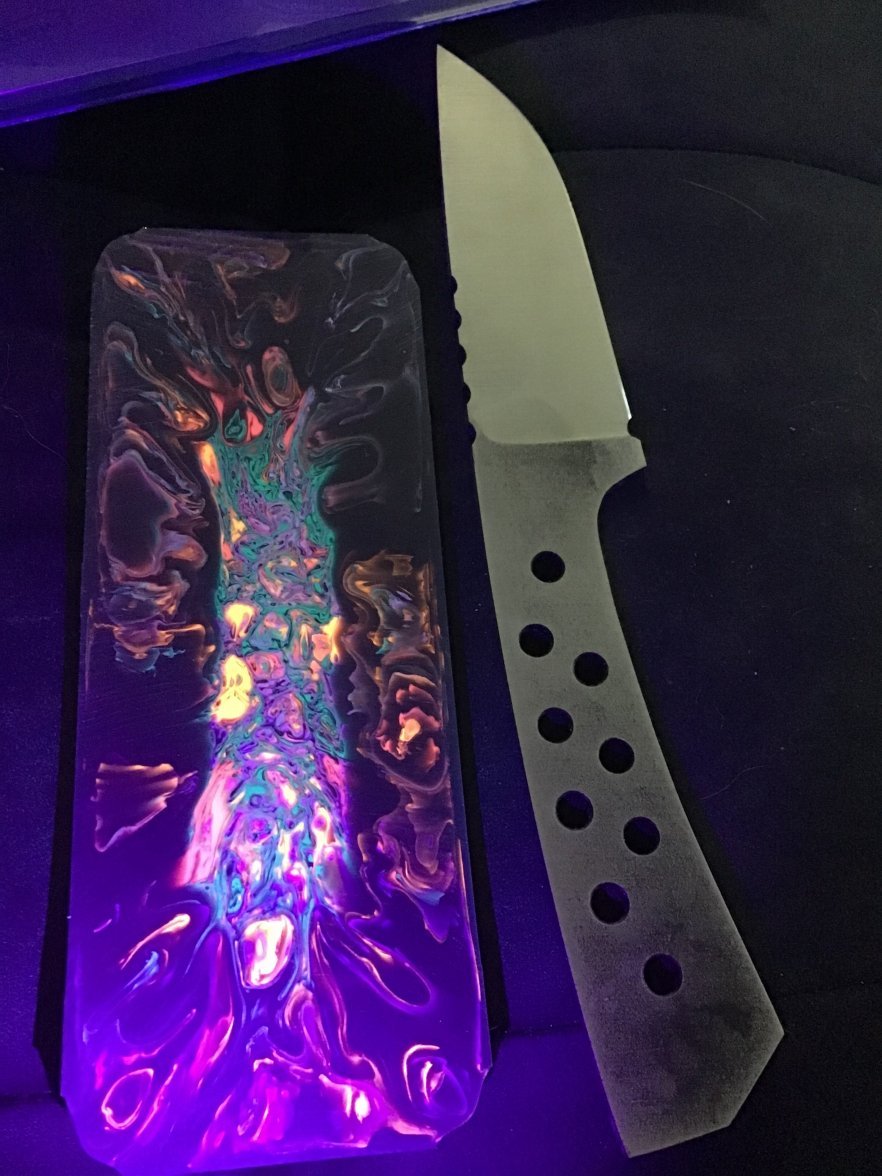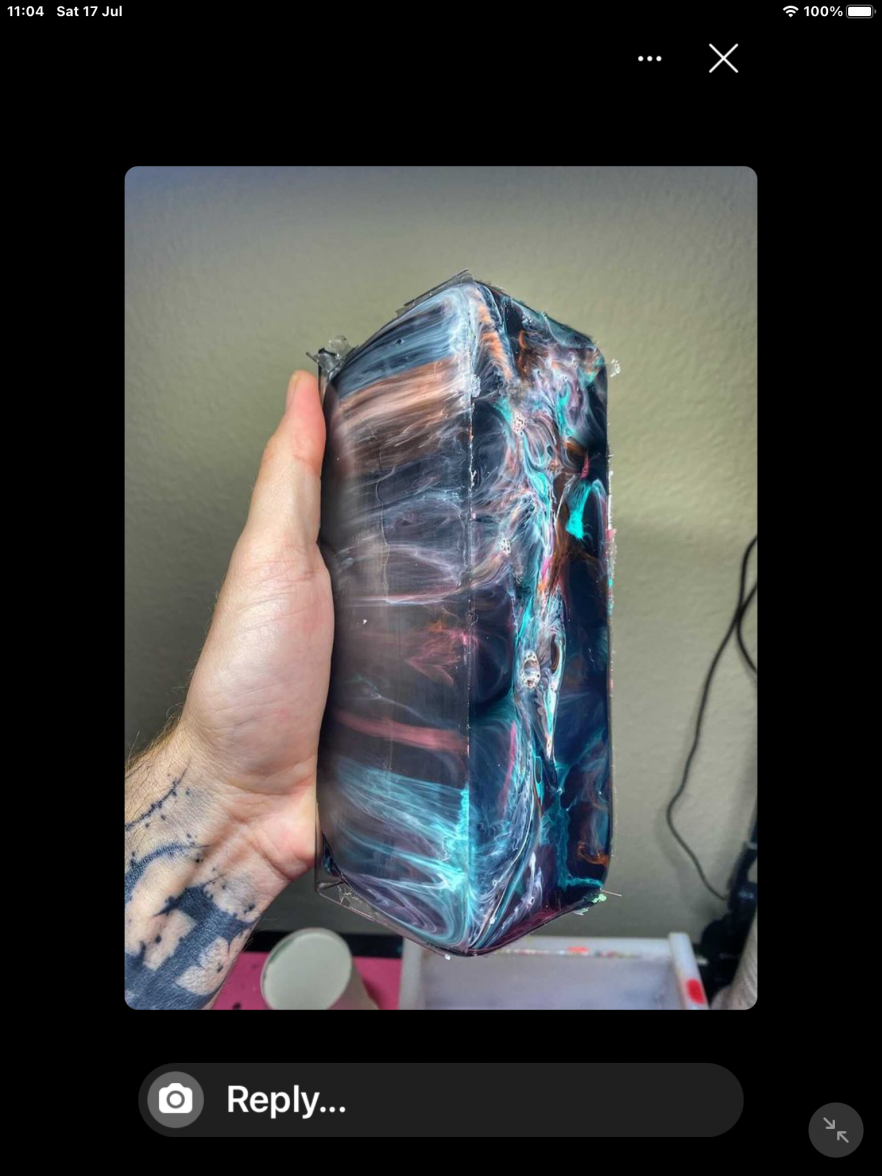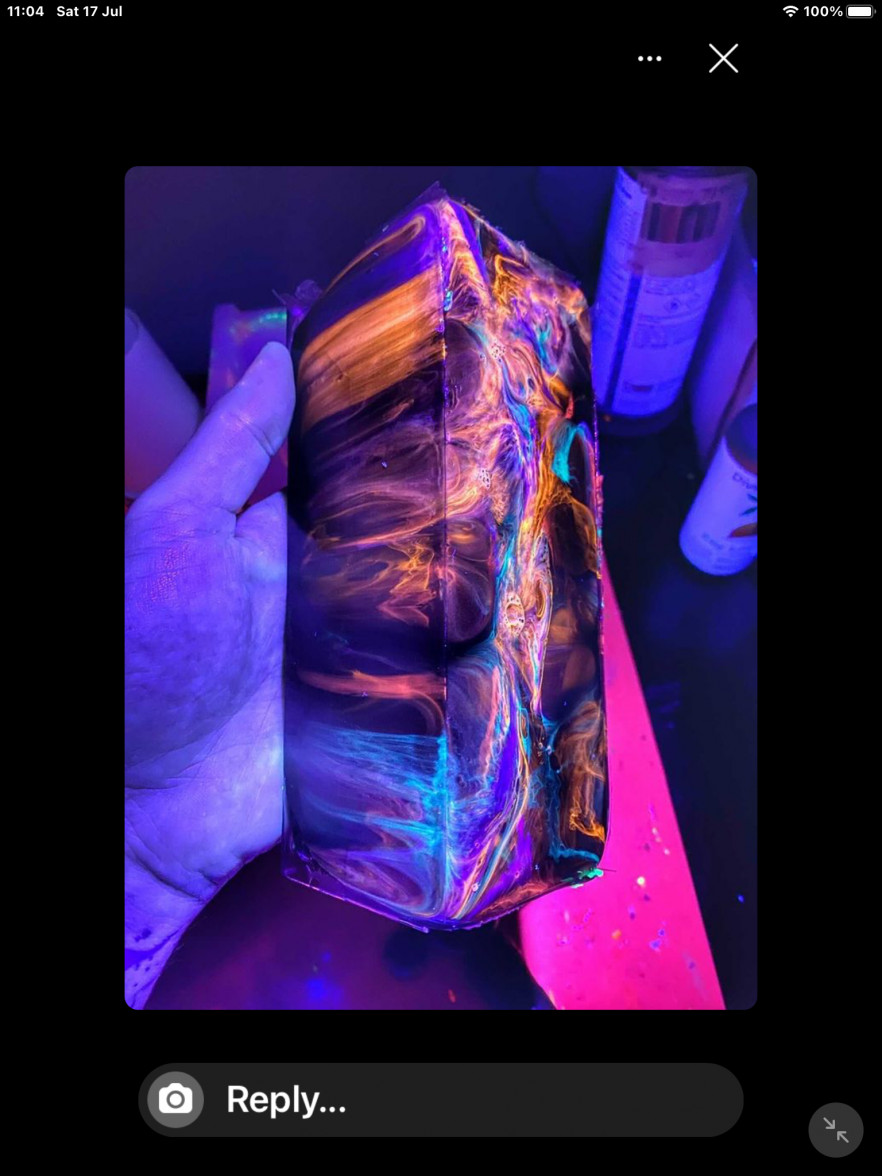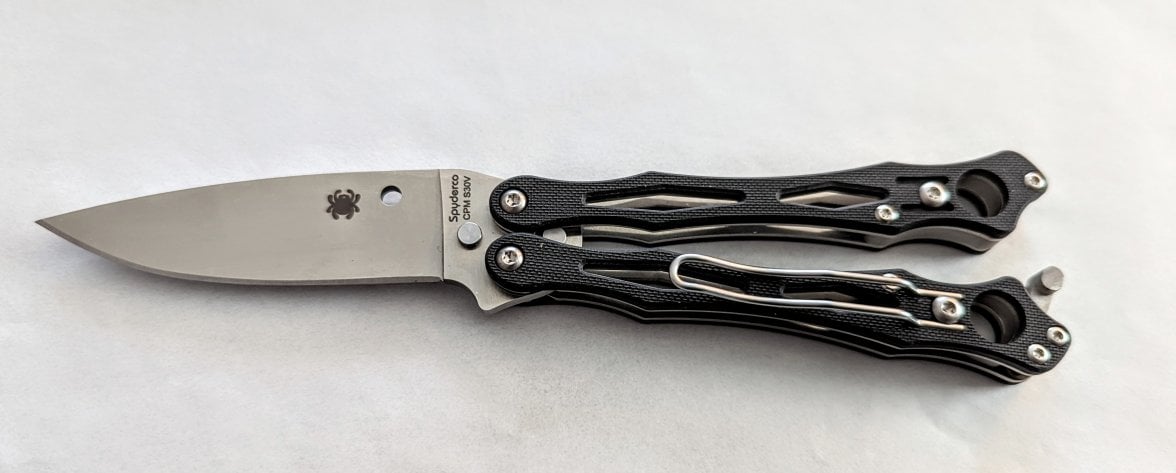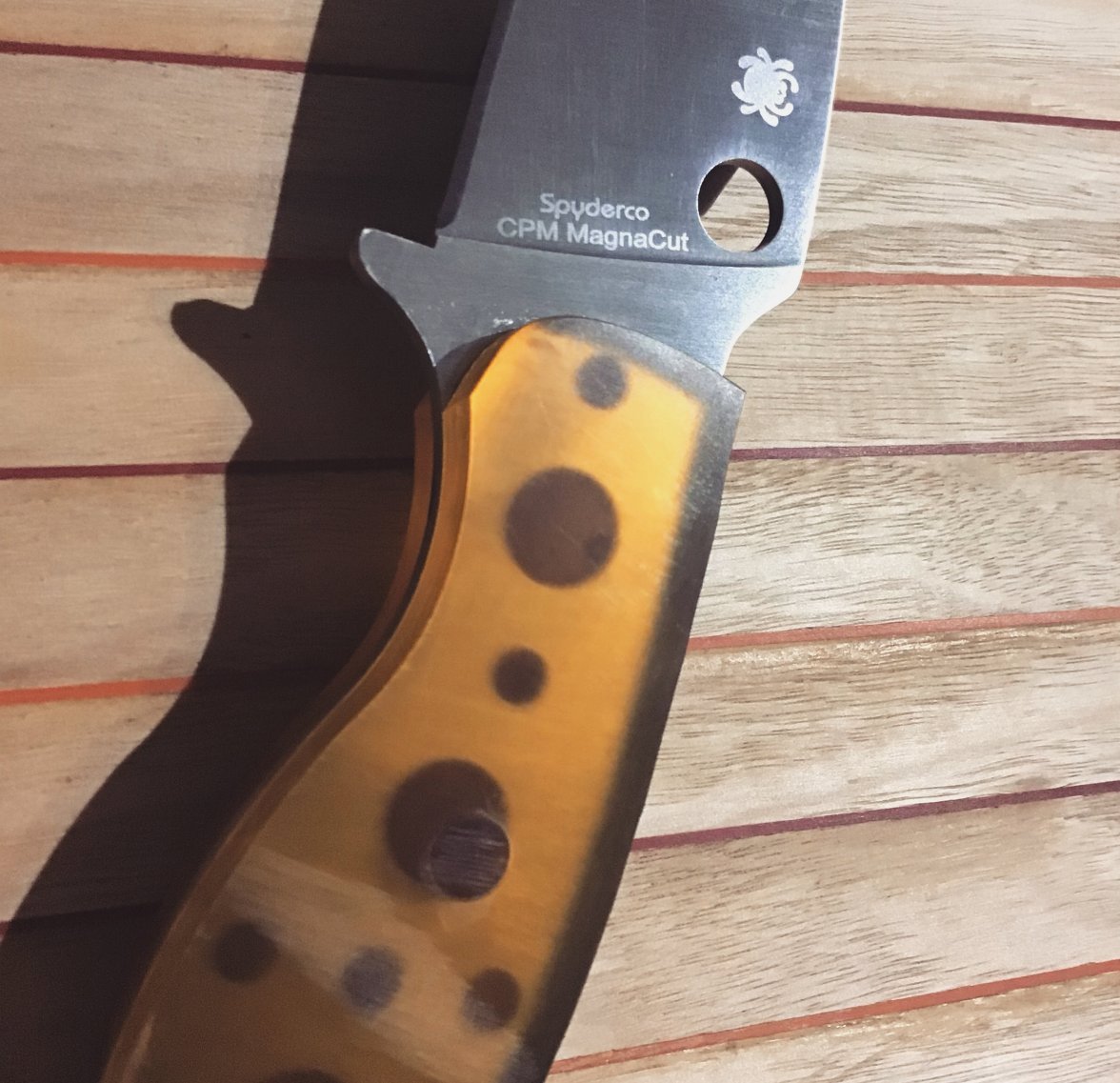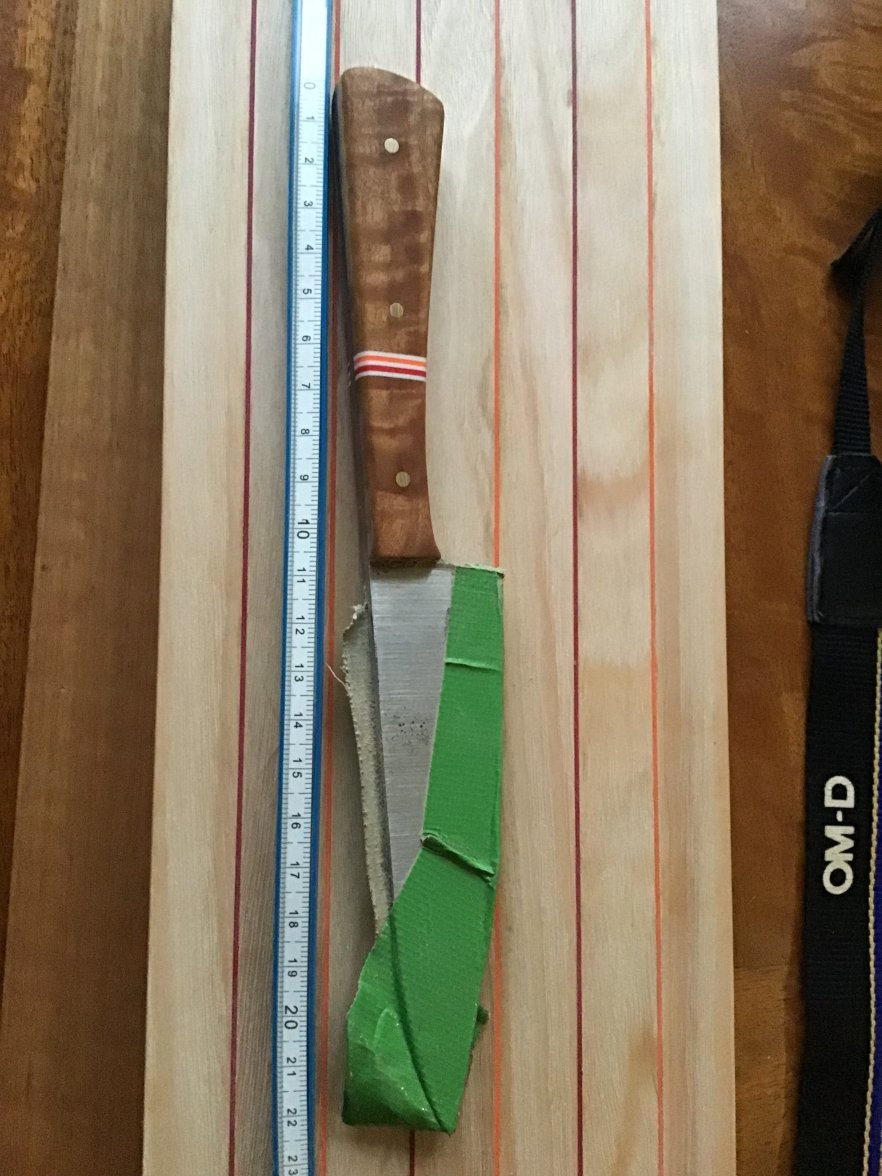Although this thread focusses mainly on modern knives, I think some of you might have an interest in historical pieces that turn up - like this one.
Some years ago we were in England on another road trip to see places we had missed on earlier visits, and to indulge our passion for hunting down interesting antiques.
Towards the end of our holiday however my collecting energy was greatly diminished. I was not much in the mood for looking around when we visited one last antique centre in Ely. At first glance the rooms in the centre did not look at all promising, but just before leaving I noticed in the bottom of a cabinet a small wooden presentation stand with a silver plaque.
It held a rather shabby small telescope, but on closer examination it was clear from the indents on the top of the two uprights that the stand had been made for something else.
The plaque showed that the object had been presented to a Royal Navy Captain by 3 Commando Brigade, Royal Marines, which was a vital clue to the odd shape of the stand's uprights. The indents now made sense to me, for I had once owned a Fairbairn-Sykes fighting knife: one indent looked as though it was shaped to fit the commando knife's double-edged blade, and the other side looked as though it was shaped for the slender, rounded hilt.
I was lucky enough on returning to Sydney to locate an original World War II Fairbairn-Sykes knife in exceptional condition, and it fitted precisely.
The next step was to research the recipient of the presentation, and the reason for it. Fortunately his 2012 obituary was online and gave most of the answers:
THE TELEGRAPH, London 28 May 2012
Capt Hugh Corbett CBE DSO DSC RN
Captain Hugh Corbett, who has died aged 95, served in wartime destroyers, winning a DSO and a DSC for his gallantry.
On the night of November 1 1944, Corbett was in command of the Hunt-class destroyer Wheatland, leading the destroyer Avon Vale northwards through the shipping lanes inshore of the island of Lussino in the northern Adriatic. His mission was to prevent the evacuation of German troops from Dalmatia, and, keeping his ships hidden against the shadow of the land, he was watching carefully over the Quarnerolo Channel when he spotted two German corvettes, UJ-205 and UJ-208.
Increasing to full speed, and lighting the channel with star shell, Corbett opened fire with four-inch guns at 4,000 yards, and in a fierce exchange quickly reduced one corvette to a wreck and blew up the other. Avon Vale had stopped to pick up survivors when a third German ship, the ex-Italian torpedo boat-destroyer TA-20, rounded a headland and opened fire before turning to flee.
Corbett gave chase, and in a running fight sank TA-20. The action was over in half an hour, and 71 German survivors were pulled from the water that night and 20 more the next day. Corbett was awarded a DSO.
Hugh Askew Corbett was born on June 25 1916 in Stepney. His father, the Rev Frederick St John Corbett, vicar of St George-in-the-East, died of Spanish flu in 1919 after ministering to the thousands of sick in crowded East London tenements. After education at St Edmunds, Canterbury, Hugh joined the Royal Navy in 1933. His first ship was the battleship Ramillies, but thereafter most of his seagoing career was in destroyers.
At the outbreak of war Corbett was junior hand in Impulsive, but was soon appointed first lieutenant of Brazen. He was due to leave her to take a course in torpedo and anti-submarine warfare, but insisted on staying at sea.
On 15 April 1940, while escorting a landing force to Harstad during the Norwegian campaign, Brazen and her fellow destroyer Fearless attacked the German submarine U-49. Five depth charges were dropped and the U-boat burst to the surface. All but one of the 42-man crew were saved, and while engaged in the rescue work Brazen picked up papers which gave the entire U-boat disposition for the German invasion of Norway. Corbett was mentioned in despatches.
After Brazen was sunk off Dover by German aircraft on July 20 1940, Corbett served briefly as first lieutenant in the Hunt-class Tyndale, and in June 1941 he joined the newly-built Lookout, which took part in Arctic convoys, in Operation Ironclad (the occupation of Madagascar) and Operation Pedestal (to resupply Malta).
Under a new commanding officer, in May 1943 Corbett took part in Operation Retribution, which prevented the escape by sea of German forces from North Africa to Sicily. Only a few hundred Germans escaped the blockade, and Corbett was awarded a DSC.
In September 1943 Corbett was given command of Wheatland, and was at the Allied landings at Salerno until deployed to the Adriatic.
Post-war, between staff appointments, he commanded the destroyers Charity and Cockade (1954-56) and Caesar (1960-62); he was also Captain of the 8th Destroyer Squadron.
In 1965 Corbett was given the task of bringing the assault ship Fearless into service. The following year Fearless was fully operational, and in October 1967 she enabled Irish Guards ferried in RAF helicopters to mount a surprise raid on rebels in Oman. Corbett’s last appointment was as Head of Naval Manpower Future Policy in 1967. He retired in 1969, a year after being appointed CBE.
Corbett then became Warden of the University Centre, Cambridge, which offers social facilities for graduate and research students.
Hugh Corbett married, in 1945, Patricia Spens, who survives him with their three sons.
Captain Hugh Corbett, born June 25 1916, died April 19 2012
The little presentation stand now had real meaning for me - but why had 3 Commando Brigade given him a memento?
A bit more digging on the internet told me that his last operational command
Fearless was used for a wide range of operations involving carrying and supporting various fighting units (including commandos), not all of which would have necessarily been on the public record. The iconic fighting knife of the British Commandos on its special stand would have been presented to him when he left
Fearless to take up his new shore posting at the end of 1967. I like to think that the stand and its original knife sat on his desk until he died, forty five years later.
The British Fairbairn-Sykes fighting knife was first designed in 1940 by close combat specialists William Fairbairn and Eric Sykes, who established and taught the combat training methods for wartime special forces such as SOE, Commandos and SBS. The knife fighting techniques were taught at Highland training centres such as Lochailort Special Training Centre (STC) and Achnacarry, which was the Commando Basic Training Centre (CBTC) from 1942-1945.
There are several WWII patterns of FS Fighting Knives. The knife I bought for the stand is the 3rd Pattern, which has a copper washed cast alloy grip with a machine forged blade to enable faster production. The grip has 27 concentric rings and is believed to be the design of the Joseph Rodgers firm, of Sheffield. Wilkinson Sword started the production of the 3rd Pattern in 20 October 1943.
The small
4 cast into the grip near the pommel confirms this knife as WWII manufactured, as wartime moulds were numbered in batches 1 to 4, believed to indicate which of four contracting firms had supplied them. The moulds were destroyed at war’s end.
Variations of this pattern are still produced and are used by special forces in many countries. Its distinctive profile is found today in many special forces unit insignia.
Collectors looking for a genuine WWII knife or a later special forces knife should take care to avoid the many modern copies, most of which are best described as 'tribute' pieces. Some manufacturers in India are even faking the Wilkinson Sword blade etching found on early WWII patterns. Investment in a good reference book is advised.
